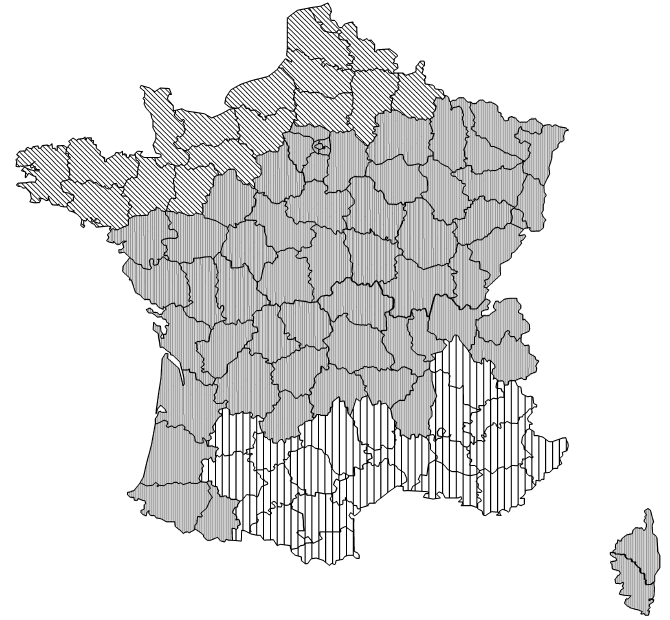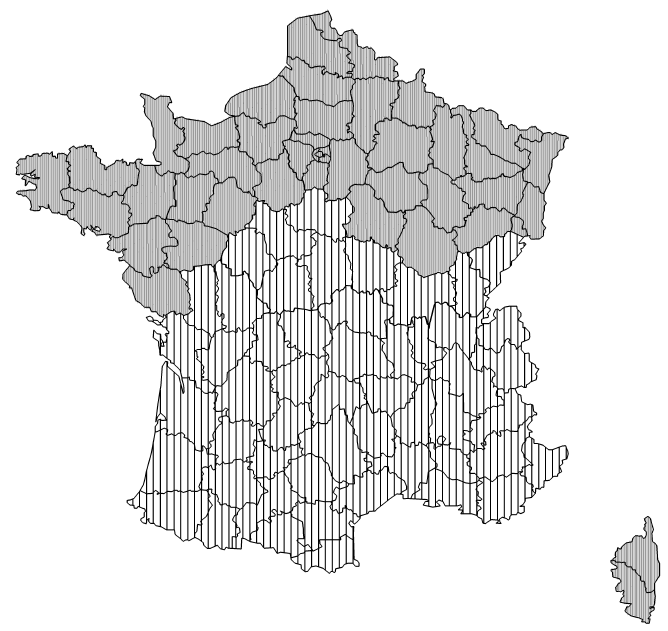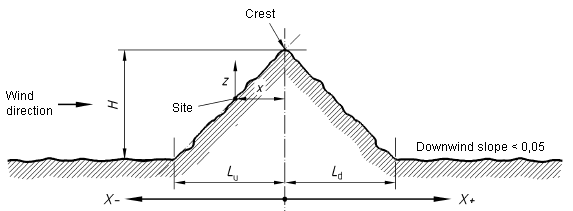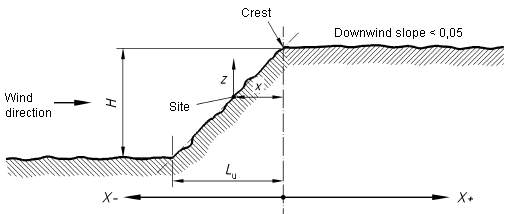[m/s]




This document contains all National annex values, which are used in SDF - Basic package

| Wind region | Wind velocity [m/s] |
|
|---|---|---|
| 1 |  |
22 |
| 2 |  |
24 |
| 3 |  |
26 |
| 4 |  |
28 |

| Wind region | Applicable azimuth cdir |
Directional factor cdir |
|
|---|---|---|---|
| 1 |  |
10 ° - 150 ° | 0,70 |
| 2 |  |
70 ° - 150 ° | 0,70 |
| 3 |  |
50 ° - 250 ° | 0,85 |

| Season region | April to September | October to March |
|---|---|---|
 |
0,8 | 1,0 |
 |
0,9 | 1,0 |
| Terrain category | z0 [m] |
zmin [m] |
|---|---|---|
| 0 Sea or coastal area exposed to sea winds; lakes and bodies of water flown by the wind over a distance of at least 5 km. | 0,005 | 0,1 |
| II Open country, with or without a few isolated obstacles (trees, buildings, etc..) Separated from each other by more than 40 times their height | 0,05 | 2 |
| IIIa Countryside with fences; vineyards; farmland; dispersed housing | 0,20 | 5 |
| IIIb Urbanized areas or industrial; dense farmland; orchards | 0,5 | 9 |
| IV Urban areas with at least 15% of the surface is covered with buildings whose average height is greater than 15 m; forests | 1,0 | 15 |

 for z ≥ 10 m
for z ≥ 10 m

| Type of the obstacle | Smax | α | kred | |
|---|---|---|---|---|
| X < 0 | X > 0 | |||
| Hills chain | 2,2 • H/L | 3 | 1,5 | 1,5 |
| Cliffs and escarpments | 1,3 • H/L | 2,5 | 1,5 | 4 |
| Isolated hills | 1,6 • H/L | 4 | 1,5 | 1,5 |

 for orography terrain used in Procedure 1
for orography terrain used in Procedure 1 for orography terrain used in Procedure 2
for orography terrain used in Procedure 2